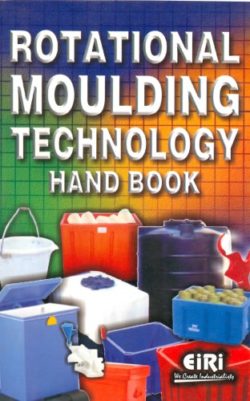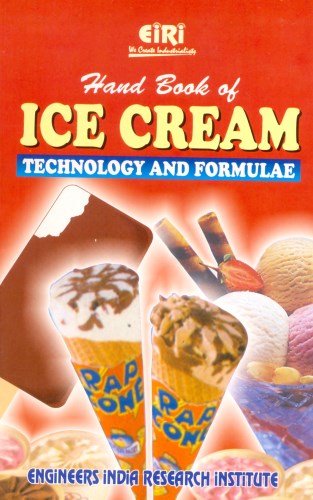HAND BOOK OF BIOFERTILIZERS & VERMICULTURE(HANDBOOK)
USD840.00 USD49.00
e-copy (PDF format) will be sent by email within 24-48 hours. 

HAND BOOK OF BIOFERTILIZERS & VERMICULTURE
THE LIVING SOIL
Biological Management of Soil Fertility
Sustainable agriculture: Needs of the Hour
Evolution of Sustainable Agriculture
Sustainable Livelihood
Making of Sustainable Farming Systems
Management of Organic Inputs
Regulation of Nutrient Dynamics by resource Quality Control
Environmental Regulation of Organic
Matter Management
Organic Inorganic Interactions
Nitrogen
Phosphorus
Nutrient Mixture
Need for Organic Inputs
Long Term Effects
The Farming Systems Context
ORGANIC SOURCES AND DYNAMICS
Organic Material Use
Composting to Enhance the Usefulness and
Acceptability of Organic Materials
Special Management Practices for Utilization of Organic Materials on Land
Bulky Organic Manures/Animal Manures/Crop Residues/Composts
Type of Bulky Organic Manures
Farmyard Manure
Composted Manure
Urban Compost
Bulky Organic Manures
Farm Yard Manure (FYM)
Compost
Aerobic method
Anaerobic method
Enrichment of Manure and Compost
Enriched farmyard manure
Enrichment of compost with microbial Inoculants
Super digasted compost
sheep and goat manure
Poultry manure
Sewage and Sludge
Night Soil Poudrettes
Concentrated Organic Manure
Oil cakes
Meal group of manures
Crop residues
Agro industrial wastes
Rice husk
Bagase
Pressmud
Tea wastes
Coir waste
Green Manuring
Green Manuring in Situ
Green Leaf Manuring
Poultry Manure :An Efficient Organic Manure for Rice
Formation Mechanisms of Complex Organic
Structures in Soil Habitats
Organisms Involved in Organic Matter Formation
Chemohetertrophic anmals
Saprophytic Bacteria, fungi and profozoa
Oxidoreductive enzymes
Classes of Mono phenol monoxygenases
Synthetic Reactions in Soil
Degradative Processes
Types of Plant Material for Decomposition
The pathway of lignin decomposition
Microorganisms for Lignin biodegradation
Acquired stability
Synthetic Processes for Humus Formation
The Role of Oxidative Coupling in Humus Formation
Theories of Humus Formation
Modern theories of humification
VERMICULTURE
Earthworms as Indicators of Soil Fertility
Soil enrichment
Earthworm: The Natural Blosector
Interaction of Vermicompost
Earthworm Mulch-Plantroot (Vemp)
Recycling of Wastes Through Vermitech
Earthworms and Plant Growth
Advantages of Organic Manure and the Role of Earthworms
What is Vermicompost
Vermiculture and Pollution Hazard
Advantages of Vermicompost
Adverse Effects on Crops
Economic Viability
Vermiculture Process
Selection of Suitable Species
Eplges
Endoges
Anecigues
Basic Characteristics of Suitable Species
Fixing Earthworms for Identification
Transport of Fixed Worms to Laboratory
Description of Suitable Species
Family: Lumbricidae
Bimastos parvus [=Allolobophora (Bimastos) parvus Eisen]
Eisenia foetida (sav)
Family: Eudrilidae
Eudrilus eugeniae (Kinb)
Family: Megascolecidae
Lampito mauritil (Kinb.)
Metaphire anomala Mich.(=Pheretima anomala)
Metaphire posthuma (=Pheretima posthuma)
Perionyx excavatus E.Perr.
Perionyx sansbaricus Michaelson
Maintenance of Base Culture
Vermicastings as Inoculant
Vermicomposting Materials
Animal during
Agricultural waste
Forestry wastes
City leaf tilter
Waste paper and cotton cloth etc.
City refuge
Biogas slurry
Industrial wastes
Preliminary Treatment of Composting Material
Pre-treatment of leaf litter and agricultural waste
Small Scale or Indoor Vermicomposting
Large scale or Outdoor Vermicomposting
Requirements for Vermicomposting
Container
Bedding material
Moisture content
Temperature
Successful Adoption of Vermiculture
Initiation of Vermiculture in India
Successful Applications in India
Composting of waste
Use in agriculture
APPLICATION OF VERMICULTURE BIOTECHNOLOGY
Vermiculture Biotechnology
Earthworm for Nutrient Management
Effect on soil fertility
Nitrogen
Phosphorous
Potassium
Earthworms for Water Management
Earthworm castings
Earthworms Act as Biopump
Earthworms for Effective Waste Management
Composting of Municipal and Industrial Wastes
Earthworms for Disease and Pest Management
Earthworms for Nutritional Crops Earthworms for Sustainable
Agriculture and Waste Land Development
Earthworms As vectors of Beneficial Microorganisms
Successful Applications
Hamessing Vermiculture Bio-Technology
Selection of proper species
Use of vermicastings for inoculation
Earthworms and land use practices
Effect of organic manure and NPK fertilizers on earthworm activity
Cultivation
Mulching
Irrigation
Biocides
Procedure to Prepare Vermicompost
Culturing technique
Culture bed
Feed composition
Feed application
Wormcast production and collection
Application of Vermicompost
Conclusion
Future Research Needs
COMPOSTING OF AGRICULTURAL AND INDUSTRIAL WASTES
Definition
Principles of Composting
Agricultural Wastes
Methods for composting of Agricultural wastes
Indore Method
Activated compost
Banglore method
Nadep Compost
Coimbatore method
Synthetic Compost
Windrow composting (leaf compost) Accelerated composting and enrichment
Vermi composting
Animal waste composting
Oil palm waste composting
Phospho compost
Re inforced compost from sugarcane trash and pressmud
Enriched FYM (EFYM)
Weed composting
Composting of parthenium
Hints for composting agricultural wastes
Industrial Wastes
Composting of coir pith
Composting of Pressumud
Using distillery effluent
Using microbial inoculum
Using pressmud and Distillery effluent
Conclusion
Future Needs
BIOLOGICAL FERTILIZERS
Soil Biota in Sustainable Agriculture
Bio Diversity of Soil Biota
Possible Management Strategies
Importance of Biological sources of Nutrients
Overcoming Soil Deficiencies Nature’s Way
Bio-Fertilizers for Sustainable Agriculture
History of Bio-Fertilizer Research
Economical and Environmental Benefits
Development of Bio-Fertilizer Industry
Groups of Bio-Fertilizers
Conclusion
MICROBAL INOCULANTS FOR NITROGEN FIXATION
Nitrogen Fixing Organisms and Plant Associations
Azotobacter
Beijerinckla
Azospirillum
Other Bacteria
Asymbiotic Blue Green Algae
Frankia
Rhizobium
General Taxonomic Characteristics of Legumes
Characteristics of the family Plants, shrubs, woody vines, and annual and perennial herbs
Characteristics of the sub-families Mimosodeae:Plants, shrubs, woody, vines, a few perennial herbs
Caesalpinoldeae:Plants, shrubs, rarely.
Scandent, rarely herbs
Papilionoldeae:Plants, shrubs, annual or perennial herbs
Techniques to Enumerate Rhizobia
Plate Count Technique
Flourescent Antibody Technique (FAT)
Enzyme linked Immunosorbant Assay (ELISA)
Plant Infection Technique
Growth system for MPN methods
Suitable test host for MPN technique
Distribution of Rhizobial Population
Rhizobium culture
Genetic modifications in Rhizobium strains
Rhizobium in Nodule
Agrobacterium (A. radiobacter, A. tumefacions)
Structure and Function of Nodule
Formation of Nodule in Leguminous Plants
Leghaemoglobin
Site of Nitrogen Fixation in Nodules
Leguminous Plants/Rhizoblaceae Symbiosis
Isolation and Identification
Mass Production
Carriers for Rhizobiuminoculants
Method of Inoculation
Crop Response
Factor Affecting Crop Response
Confirming Nodulation
Field Methods for Identification of Plant Actually Fixing Nitrogen
The Need to Inoculate
Selecting and Handling Inoculoants
Inoculation
Methods of application
Bio-Fertilizers and Their Usage in Field Crops
Seed treatment
Seedling root dip
Soil Application
Optimizing Nitrogen Fixation in NFS
Effective and Ineffective Strains
Establishment of Inoculated Rhizobium
Production of Rhizobium Biofertilizer
Selection of strains
Carrier materials and their sterilization
Suitable nutrient broth
Suitable packing material
Suitable adhesive material
Fermentation
Rotary shaker method
Bioreactor
Frankiacease Symbiosis
Azospirillum Biofertilizer
Major Species
Isolation
Mass Multiplication
Method of Inoculation
Conditions Needed for Successful Inoculation
Crop Response
Azotobacter Biofertiuzer
Isolation
Mass Production
Method of Application
Crop Response
Methods of Application of Azospirillum and Azotobacter
Blue Green Algae Inoculant
Distribution
Isolation
Mass Production
Methods of Field Application
Crop Response
Blue Green Algae (BGA) and Azolla
Mass Production and Applications
Crop Response
Factors Affecting Response
BGA Production Technology
Trough method
Pit method
Mass Multiplication of BGA in the Field
Dual Cropping of Azolla with Rice
Azolla Anabaena Symbiosis
Multiplication of Azolla
Propagation
Cement Cistems
Mass multiplication in nursery plots
Enhanced Crop Production
MECHANISM AND ESTIMATION OF NITROGEN FIXATION
Diazotrophic Microorganisms
Biological Nitrogen Fixation
Asymbiotic Nitrogen Fixation
Microorganisms
Mechanism of Asymbiotic Nitrogen Fixation
Requirements of Nitrogen Fixation
Symbiotic Nitrogen Fixation
Mechanism of Nitrogen Fixation in Legumes
Theory of Virtanen
Theory of Burn’s and Wilson
Nitrogen Converters in the Soil
Cyanobacteria and Nitrogen Fixation
Nitrogen Fixing Fungi
Bio-chemical Aspects of Diazotrophy
Nitrogenase Producing E.Colicells
Genetics of Free living and Symbiotic Diazotrophs
Organization of Nitrogen fixation Genes
Nod Genes for Nodulation
Regulation of Nitrogen fixation Genes
Genetics of Symbiotic Diazotropha
Transfer of NIF Genes to Microorganisms
Transfer of NIF-Genes and Development of new Nitrogen-Fixing Plants
Estimates of Nitrogen Fixation
N-Based Methods
Nitrogen Balance Studies
Acetylene Reduction Assay
Quantifying Nitrogen Fixation in NFSS
Quantities of Nitrogen Fixed
Factors Influencing Biological Nitrogen Fixation
Biological Factors
Oxygen
Water stress
Temperature
Age
pH and soil nutrients
Combined soil N
Salinity
Lack of suitable bacteria
Recovering form Stress
Nitrogen Fixation Research in India
BIOLOGICAL MOBILIZATION OF PHOSPHORUS
Forms of P Available in Soil
P Availability Issue
Mode of Action of PSMs
Organic Acids and P Solubilization
Enzymes and P-solubilization
Effect of PSMs on Growth and P economy
Duel Inoculation of P-Solubilizers and Nitrogen Fixes
Isolation
Crop response
Vesicular Arbuscular Mycorrhizae (VAM)
Roots as Sinks and Sources of Nutrients and Carbon in Agricultural Systems
Importance of Mycorrhiza
Benefits to Plants
Other Roles in Ecosystems
Values of People
Mycorrhizal Interaction with Plants and Soil Organisms in Sustainable Agrocecosystem
Symbiosis
Root System form
Soil and site Factors influencing Mycorrhizas
Mycorrhizal Inoculum
Soil Disturbance
Soil Fertility
Adverse Soil Conditions
Characteristics of Fungal Isolates
Manipulating Mycorrhizal Fungi
Type of Associations
Types of Mycorrhiza
Ectomycorrhiza
Ectendomycorrhiza
Endomycorrhiza/Arbuscular Mycorrhizal Fungi (AMF)
Arbutold mycorrhiza
Monotropoid mycorrhiza
Ericold mycorrhiza
Orchidoid mycorrhiza
Host Plants
Place of Availability of Mycorrhizal Plants
Mycorrhizal Fungi
Arbuscular Mycorrhizal Fungi (AMF)
Establishment of Symbiosis
Classification of AMF
Ectomycorrhizae (ECM)
Vesicular Arbuscular Mycorrhiza (VAM)
How mycorrhizas Work
Nutrient Depletion Zones
Hyphal Activity
Mycorrhizal Dependency
Obligatorly Mycorrhizal Plants
Facultatively Mycorrhizal Plants
Non mycorrhizal plants
Mycorrhizal Fungi and Pathogen Interaction
Nitrogen Transfer in Mycorrhizal Plants
Nitrogen Nutrition in Mycorrhizal Plants
Forms of Nitrogen used by Mycorrhizal Associations
Mycorrhizal Effects on Nodulation and Nitrogen Fixation
P Response Curves
Inoculation Methods
A. Trasplanted crops
B. Plant directly sown in the field
Mycorrhizal pellets
Fluid drilling
Inoculation in furrows
Pre-cropping
Appropriate VA mycorrhizal Technology
A. Transplanted crops
B. Field sown crops
THE CYCLIC SYSTEM OF NUTRIENT MANAGEMENT
Geographical Nutrient Transfer
Natural transfers (nutrient flows in landscapes)
Nutrient transfer into cities
Export into other countries
The Concern
Future nutrient shortages
From Nutrient Flows to Cycles
Organic Farming and Waste Recycling
The Cyclic System For Nutrient Management
Minimizing Nutrient Losses
Changes in soil slope
Soil cover
Hamessing Untapped Nutrient Sources
Exploring Internal Nutrient Sources
Better use of Nutrient Sources
Soil nutrient and soil fertility aspects
Optimum soil reaction
Soil organic matter
Organic Materials
Crop residues and farm manures
Commercial and Industrial waste products
Other organic fertilizers better Nutrient Management for Crops and Crop Rotations
Adaptation of crops and crop rotations to nutrient supply
Nutrient Management for Quality Products and Stress Resistance
Higher quality of food and fodder products
Nutrient management of grass land for fodder quality
Higher stress resistance of crops due to better nutrition
Nutrient Management in Farming Systems
Efficient Nutrient Recycling with Agroforestry
Recycling paths: short term and longer term
Agroforestry Systems
Role of Agroforestry
Agroforestry for soil enrichment
Ecological balance
Organic matter and nutrient addition to soil
Biological Nitrogen fixation
Nutrient cycling
Conclusion
Exploitation Cropping vs Sustinable Agriculture True at Different Yield Levels
Exploitation cropping
Sustainable agriculture at low to medium yield level
Extensive sustainable farming
Bio or ecofarming (deliberate extensive farming)
Sustainable agriculture at high yield level
Nutrient Management on Arid Lands
Saline soils
Nutrient Management in Humid Tropics
Rice cropping on paddy soils
Agroforestry
Intergrated Nutrient Management
Integration of fertilizers with bulky organics
Green manuring with inorganic fertilizers
Bio fertilizers with inorganics
Integrated Approach in Bio fertilizer Use
Low cost Technology for Enrichment of Compost
Sugarcane trash compost
Biogas slurry
Vermicompost
Industrial wastes
Municipal and sewage wastes
Management of Major Nutrients (N.P.K.) with Organic Sources
Nitrogen
Synchronization
General Properties of Nitrogen from organic Sources
Cover Crops and Ridge Tillage in Sustainable Farming
Phosphorus
Mycorrhiza
Potassium
Biological Approach for Secondary and Micronutrients Acquisition
Vam
Plant Growth Promoting Rhizobacteria (PGPR)
Organics
Organic Farming vs Biodynamic Farming
Principles of Biodynamic Farming
Rules for using Biodynamic Agriculture
Few Biodynamic Preparations
Conclusion
PERSPECTIVES
Constraints in Bio-Fertilizer use
Production Constraints
Unavallability of appropriate and efficient strains
Unavailability of a suitable carrier
Mutation during fermentation
Lack of standards in packaging
Market Level Constraints
Lack of awareness of farmer
Inadequate and inexperienced staff
Lack of quality assurance
Seassonal and unassured demand
Limited scope for marketing
Resource Constraints
Limited resources generation for BF production
Limited risk taing capacity of farmers
Field level constraints
Soil and climatic factors
Native microbial population
Faulty inoculation techniques
Crop management
Quality control
Research and Development Needs
Widening Research base
Screening new Efficient Strains
Improvement in Production Technology
Preparation of Bio-fertilizer Map
Quality Assurance
Improving Distribution System
Improving Technical Support System
Institutional Support for Research and Development
Quality Control
Promotional Strategies
Future Thrusts
LIST OF BIO FERTILIZERS UNITS IN INDIA AND ABROAD
List of Bio Fertilizer Units in India
PLANT ECONOMICS OF AGROFERTILIZER FROM LEAVES
Plant & Machinery
Fixed Capital
Raw Materials
Total Working Capital/Month
Total Capital Investment
Turn Over/Annum
PLANT ECONOMICS OF BIOFERTILIZERS FROM CHICKEN REFUGES, OIL CAKES, BONE MILLS
Plant & Machinery
Fixed Capital
Raw Materials
Total Working Capital/Month
Total Capital Investment
Turn Over/Annum
PLANT ECONOMICS OF BIOFERTILIZERS FROM COWDUNG & OTHER WASTAGE
Plant & Machinery
Fixed Capital
Raw Materials
Total Working Capital/Month
Total Capital Investment
Turn Over/Annum
PLANT ECONOMICS OF BIOFERTILIZERS (ORGANIC FERTILIZERS) FROM GARBAGE (MSW)
Plant & Machinery
Fixed Capital
Raw Materials
Total Working Capital/Month
Total Capital Investment
Turn Over/Annum
PLANT ECONOMICS OF ORGANIC MANURE
Plant & Machinery
Fixed Capital
Raw Materials
Total Working Capital/Month
Total Capital Investment
Turn Over/Annum
PLANT ECONOMICS OF SEA WEED LIQUID FERTILIZER
Plant & Machinery
Fixed Capital
Raw Materials
Total Working Capital/Month
Total Capital Investment
Turn Over/Annum
PLANT ECONOMICS OF VERMI COMPOSTING
Plant & Machinery
Fixed Capital
Raw Materials
Total Working Capital/Month
Total Capital Investment
Turn Over/Annum
Engineers India Research Institute (EIRI) is a renowned name in the industrial world for offering technical and financial consultancy services.
EIRI services are:
Detailed Feasibility Reports
New Project Identification
Project Feasibility and Market Study
Identification of Lucrative Industrial Project Opportunities
Preparation of Project Profiles / Pre-Investment and Detailed Feasibility Studies,
Market Surveys / Studies, Market Survey Cum Detailed Techno-Economic Feasibility Reports
Project Reports in CD Roms
Identification of Plant /Process/Machinery and Equipment, Industrial General Guidance for setting up new industrial projects.
Our most up-to-date and Technologically Advanced Industrial Project Reports, categorized with respect to Financial Outlays and Sector – wise Classification are immensely useful for :
Existing Small or Medium Scale Industrialists facing competition from large houses
Young Entrepreneurs dreaming to start their own industrial enterprise
Young Graduates and Professionals wishing to begin their career
Industrialists interested in Debottlenecking their capacities & New Product – Lines
Large Industrial Houses pursuing Expansion, Growth and Diversification Plans




